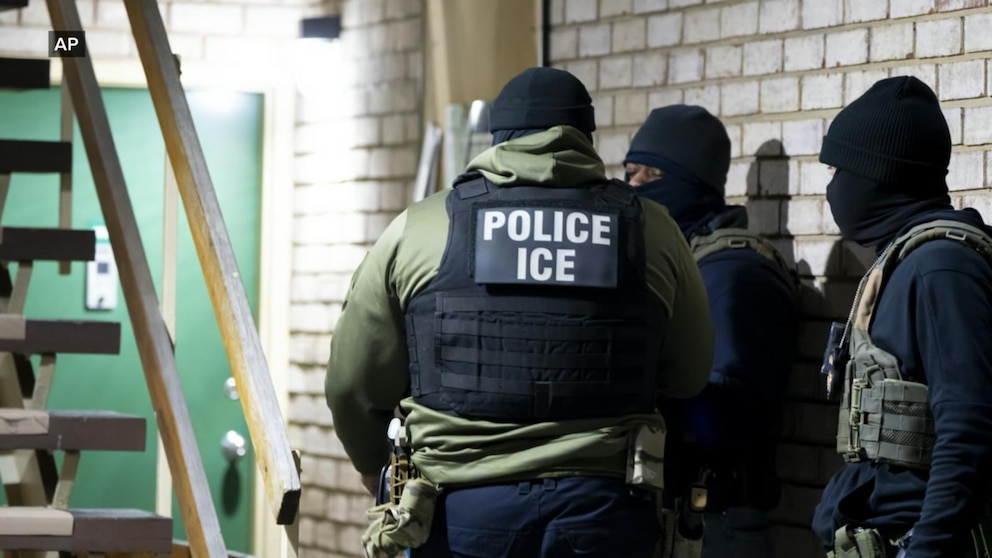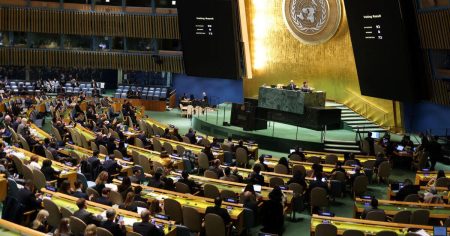The Trump Administration’s Call to Action: Locating Migrant Children
Introduction: Understanding the Situation
In recent years, the issue of migrant children crossing the southern border of the United States without a legal guardian or parent has become a significant concern for immigration authorities. According to government data, over 600,000 migrant children have crossed the border since 2019. This figure highlights the scale of the challenge faced by U.S. immigration agencies, including Immigration and Customs Enforcement (ICE), in managing the influx of unaccompanied minors. In response to this growing issue, the Trump administration has called for ICE agents to locate these migrant children, sparking a mix of concern and debate among policymakers, advocates, and the public.
The Historical Context: A Growing Crisis
Since 2019, the southern border has seen an unprecedented number of migrant children arriving without adult supervision. These children, often fleeing poverty, violence, or unstable living conditions in their home countries, undertake perilous journeys to reach the United States in search of safety and opportunity. The sheer volume of arrivals has strained the resources of U.S. immigration agencies, which are tasked with processing, housing, and caring for these minors while attempting to reunite them with family members or sponsors in the country. The situation has been further complicated by the challenges of identifying and tracking these children once they are placed into foster care or released to sponsors.
Challenges in Locating Migrant Children
The task of locating over 600,000 migrant children is a monumental undertaking for ICE agents. Many of these children are placed with relatives or sponsors across the United States, and their whereabouts are not always easily traceable. In some cases, sponsors may not respond to follow-up checks, leaving officials unsure of the children’s well-being or safety. Additionally, concerns have been raised about the potential for exploitation or abuse of these minors once they are no longer in the direct care of immigration authorities. The administration’s directive to locate these children has been motivated by a desire to ensure their safety and prevent them from falling into harm’s way.
However, critics argue that the effort to track down these children could lead to unintended consequences, such as the separation of minors from the families or sponsors who have taken them in. There is also the question of how to balance the need for accountability with the rights and privacy of the children and their caregivers. The role of ICE in this process has been particularly contentious, as the agency’s involvement often raises fears among immigrant communities about increased enforcement and deportation efforts.
Ethical and Legal Considerations
The decision to have ICE agents locate migrant children has sparked a heated debate about the ethical and legal implications of such a move. Advocates for immigrant rights have expressed concerns that this initiative could lead to further trauma for children who have already endured significant hardship. They argue that ICE’s involvement may discourage sponsors from coming forward, fearing potential repercussions or deportation. Moreover, there are questions about whether the resources being allocated to this effort could be better utilized in providing support services for these children, such as education, healthcare, and legal assistance.
On the other hand, proponents of the initiative argue that ensuring the safety and well-being of these children is a critical responsibility of the government. They emphasize that the effort is not about deportation but about verifying that minors are in safe and appropriate living situations. The administration maintains that this measure is necessary to prevent human trafficking, abuse, and other risks that unaccompanied minors may face.
A Path Forward: Solutions and Reforms
To address the issue of unaccompanied migrant children, policymakers and advocates agree that a comprehensive and compassionate approach is needed. This includes investing in programs that provide support for these minors, such as legal representation, mental health services, and education. Additionally, improving the efficiency and transparency of the sponsorship process could help ensure that children are placed in safe and stable environments.
Reforming the immigration system to address the root causes of migration, such as poverty and violence, is also essential. By working with governments in the countries of origin to create safer and more stable living conditions, the United States can reduce the number of children forced to make the dangerous journey north. Finally, fostering collaboration between immigration agencies, non-governmental organizations, and local communities can help ensure that these children receive the care and protection they deserve.
Conclusion: A Call to Action and Responsibility
The issue of locating and ensuring the safety of over 600,000 migrant children is a complex and emotionally charged challenge. While the Trump administration’s directive to ICE agents has brought attention to the problem, it also highlights the need for a broader and more comprehensive approach to addressing the root causes of migration and the care of unaccompanied minors. As the debate continues, it is crucial to prioritize the well-being and dignity of these children, ensuring that their safety and rights are protected. The solution will require collaboration, compassion, and a commitment to creating a system that serves the best interests of these vulnerable individuals.















